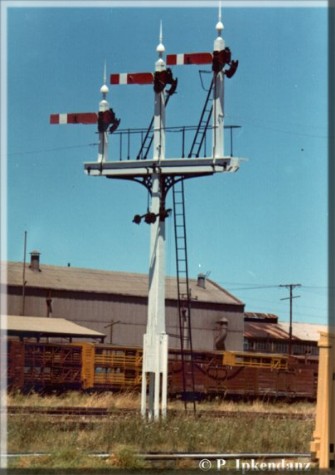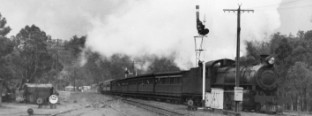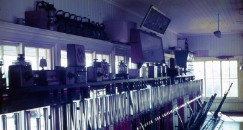
The Signalling Interest Group of Western Australia began in 1994 when a small group of individuals began researching the Claremont Signal Cabin, which had then recently been opened to the public. This research was to broaden the educational interpretation for visitors on public open days. It soon became apparent that information on a great many other signal cabins in Western Australia could be collected at the same time. To this end we hoped to encourage former employees, and the general public as well, by the creation of the original SIGWA website. Now, many years later, this website provided by SignallingWA in 2012 was improved and each signal cabin page now has it's own e-mail form to enable readers to easily submit, or seek information about a signal cabin of their interest. The collection of information and as well as hard copy documentation is on-going. This ambitious project will, we hope, lead to the production of a comprehensive resource, detailing all of the signal cabins, signalling equipment and safe working / operational procedures in the state of Western Australia.
The group remain committed to conduct public open days in the Claremont Signal Cabin on a regular basis, to educate the public about how a Signalman worked, and of course, railway signalling - Western Australian style.
Our small group is fighting a battle against time with limited resources and too few members and we welcome any assistance in salvaging the knowledge from the past, lest it be lost forever.
CAN YOU HELP? Your information may be just the piece of information needed to fill in some of the all-too-many blanks in our state's signalling history.
We are looking for the following:
Information about any signal cabin, lever frame or signalling installation that has ever existed, anywhere in Western Australia;
- Copies of Driver's sketch drawings, or Weekly Notice Diagrams of Signalling of any W. A. station;
- Photographs of the Signalmen, Safeworking Technicians, Interlocking Fitters and / or Maintainers, Signals and Signal Cabins of Western Australia;
- Assistance with compilation, processing and archiving of data about Signalling;
- Donations of signalling artefacts, or even photographs of signalling items currently held in private collections;
- Anecdotal stories or reminiscences of former Signalmen, or others with interesting stories to relate about signalling;
- Assistance with restoring equipment and artefacts already saved from the scrapyard.
- All information and assistance forthcoming will be duly acknowledged, and will be gratefully appreciated.
NOTICE
The information used in the interpretation of the history of Signal Cabins featured in this site's Archive Pages may not yet be complete. From time to time, and sometimes as a result of a cabin being featured on this site, additional information is subsequently submitted - in fact, this is actively encouraged. Needless to say that some of this information may not necessarily be reflected in the official W.A.G.R. signal cabin record cards to hand.
Whilst we strive to portray the signal cabins of Western Australia in as much detail as we can, we welcome any additional information which increases the accuracy of our presentations. Such is the lot of any work in progress.
A word on Copyright:
It is not our intent to infringe existing copyright on any existing work. Therefore, suppliers of any information will be required to state (in writing or via e-mail), their relationship to the material supplied, and where the material is not the copyright of the supplier, the name of the copyright holder - or the source (provided this is known) must be provided.
Photographs used on this site and in print:
My thanks are extended to fellow railway fans, signallling enthusiasts and groups such as Rail Heritage WA Archives, who have supported the original S.I.G.W.A. website over the years with photographs. Many 'new' photographs have recently become available, and when such photos have signalling interest I hope to showcase them here. Whilst these photos will be made available on this site (with the owners consent) the new photos may appear on this website, but will not be present in the original publication "Signal Cabins in Western Australia" by Chris. J. E. French.
A little about location Mileages:
The mileages used on these pages are, unless stated to the contrary, taken from the "Railway Map of Western Australia - 1938" produced by the Western Australian Government Railways a copy of which can be obtained from the Rail Heritage WA Museum Shop.
A little about location co-ordinates:
The co-ordinates used in the Signal Cabin pages, and elsewhere on this site are taken primarily from Google Maps combined with visual clues based on personal remembrances, and in some cases using data from a Navman N40i GPS unit taken on field trips to known locations.
In providing the pages on this website, I hope to make the site informative, especially to those who may not have had prior knowledge of railway signalling, yet with enough interest for signalling enthusiasts as well.
It is my hope that with your help, the Signalling Interest Group of Western Australia and SignallingWA will enable a concise history of signalling to be compiled, and due recognition will be given to those supplying information, which may be used in future publications. Can YOU help?
Kind Regards,
Chris. J. E. French
SignallingWA 2023


